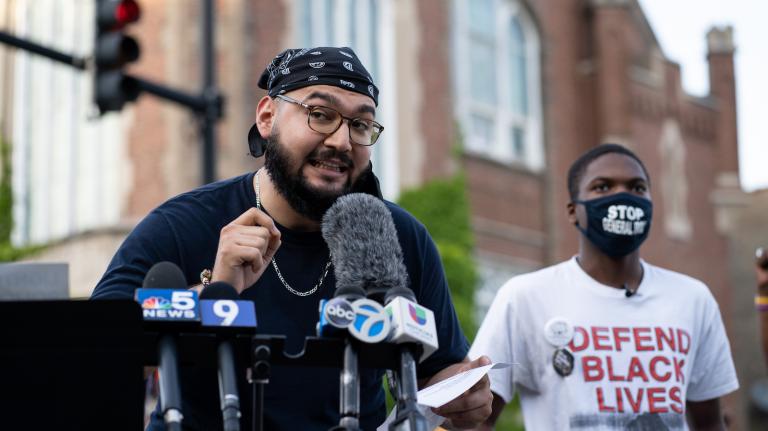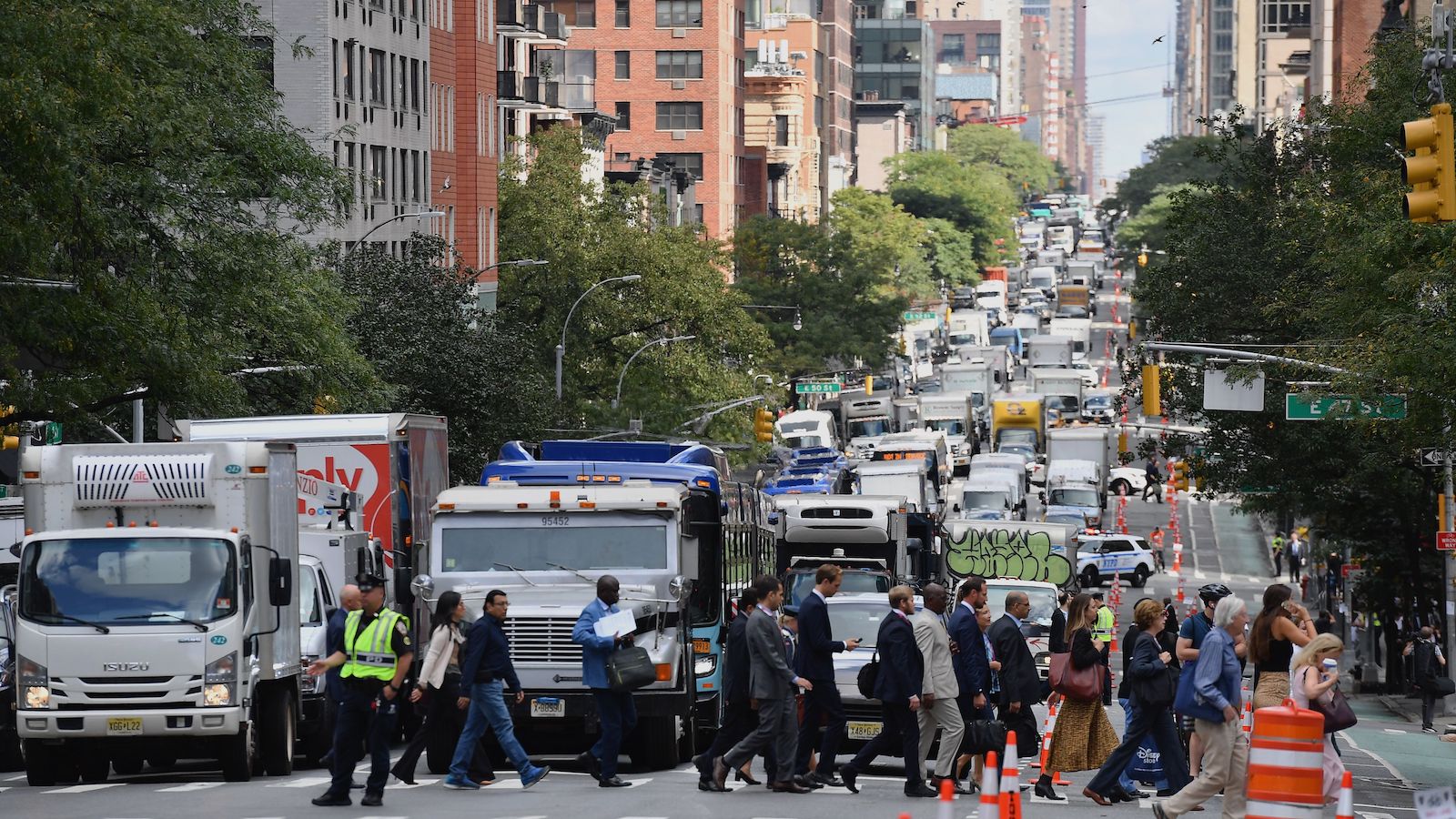New York City has been debating the merits of charging drivers a fee for entering its central business district for decades. Known as “congestion pricing,” it’s a strategy that major cities in other countries, including London and Singapore, have employed to reduce traffic and raise funding for public transportation.
While not frequently advertised as a form of climate policy, congestion pricing also has the potential to cut planet-warming emissions by reducing car trips and increasing public transit ridership. Now, the Big Apple is one step closer to becoming the first U.S. city to give it a shot.
On Wednesday, officials from the New York City and New York state departments of transportation, the NYC area’s Metropolitan Transportation Authority (or MTA), and the U.S. Federal Highway Administration released an environmental assessment that analyzes seven different possible pricing schemes for the program, measuring each one’s effects on traffic, air quality, public transit, drivers, and neighborhoods. While it will still take more than a year to get the program across the finish line — the first tolls aren’t expected to be collected until late 2023 or early 2024 — the assessment offers the first peek at what it might actually look like.
As prescribed by a New York state law that passed in 2019, the congestion pricing zone will encompass all of lower Manhattan south of 60th street. Drivers who are using roads around the edge of the island, like the West Side Highway or FDR Drive, will not be charged, but once they turn off onto a city street, toll collecting technology will either charge them automatically if they have an E-ZPass transponder or send a bill to the address of the registered vehicle owner if they don’t.
On the lower end of the prices that were studied, passenger cars would be charged between $5 and $9 for entering the zone, depending on the time of day, while on the higher end, they might be charged up to $23 during peak hours. For commercial trucks, the fees would be significantly higher, at $12 to $82 per entry. By law, vehicles used for emergencies and for transporting passengers with disabilities will be exempt, and low-income residents who live inside the zone will be eligible for state tax credits equal to the amount of tolls they pay.
The assessment also mixes and matches a number of potential exemptions that will affect how much the program reduces traffic, how much revenue it generates, and how much it will cost drivers. Some of the scenarios would force taxis and trucks to pay the fee every time they enter the zone, while others would cap those charges at once, twice, or three times per day. Some of the scenarios would also try to reduce the cost burden to drivers who are already paying a toll to enter Manhattan via bridges and tunnels by offering them bill credits.
All of the fee systems studied except one are expected to raise at least $1 billion per year. Depending on which rates and exemptions are chosen, the overall volume of vehicles entering the central business district could decrease by 15 to 20 percent while public transit ridership to and from the area could increase by 1 to 2 percent.
New York City already has one of the most-used public transit systems in the country, and yet on-road vehicles still made up nearly 30 percent of its emissions in 2019. The city’s climate plan includes initiatives to promote walking and biking and to support the rollout of electric vehicles. But it also relies on congestion pricing to cut down on car trips and raise crucial funding that will be used to expand access to public transit and improve transit infrastructure.
The assessment released Wednesday found that at a minimum, congestion pricing would cut total carbon dioxide emissions by 0.8 percent across the region, including Long Island, Westchester, and northern New Jersey, by 2045. But that number does not account for the potential benefits of transit projects elsewhere in the city that will be enabled by revenue from the program.
While the assessment finds very few adverse impacts of the program, it does highlight a key environmental justice concern — trucks might avoid the fee by finding new routes through the South Bronx, a predominantly Black and Hispanic area that is already overburdened with air pollution. The analysis found that the number of trucks passing through the area could increase by 50 to 700 per day. It says that the NYC Department of Transportation plans to monitor air pollution after congestion pricing is implemented to see if any changes can be attributed to the program.
U.S. Representative Ritchie Torres, who represents most of the South Bronx, expressed concern about this aspect of the plan. “I am a supporter of congestion pricing in principle,” he said in a statement to Gothamist. “That being said, any plan that threatens to intensify diesel truck traffic on the Cross Bronx Expressway would raise serious concerns about public health and racial equity.”
Now that the environmental assessment has been released, it must be approved by the U.S. Department of Transportation. (Some of the roadways within the congestion pricing zone are part of the National Highway System, and others have been improved with funding from the federal government, triggering the requirement for a federal review.)
If the federal government approves the program, a new body established by the MTA called the Traffic Mobility Review Board will recommend a system of rates, exemptions, and credits to the MTA’s board of directors, which will hold public hearings on its proposal before issuing the final rules.




